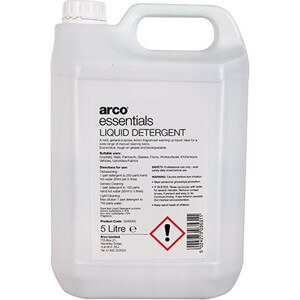Detergent COSHH Assessment Form

A three-page COSHH Assessment Form for Detergent, with some example text reading:
First aid details:
After significant accidental inhalation: Non-applicable.
After contact with eyes: Do not rub eyes, as additional cornea damage is possible by mechanical stress. Remove any contact lenses and open the eyelid(s) widely to flush eye(s) immediately by thoroughly rinsing with plenty of clean water for at least 15 minutes. If possible, use isotonic water (0.9% NaCl). Contact a specialist in occupational medicine or an eye specialist.
After skin contact: Wash skin thoroughly with soap and water as soon as reasonably practicable. Seek medical advice if the skin becomes red, swollen or painful.
After significant accidental ingestion: Wash out mouth with water.
Detergents are specialised cleaning agents formulated to effectively remove dirt, grease, and stains from a wide range of surfaces and fabrics. Their primary function is to enhance the cleaning power of water by enabling it to penetrate and suspend dirt particles, thereby facilitating their easy rinsing away.
The effectiveness of detergents is largely attributed to their composition, particularly the presence of surfactants. These are unique molecules that possess hydrophilic (water-attracting) and hydrophobic (water-repelling) properties. This dual nature allows surfactants to interact with both water and oily or greasy contaminants, lifting them off surfaces and enabling thorough washing.
Detergents are available in various formulations tailored for specific cleaning tasks. For instance, laundry detergents are designed to treat various types of clothing fabrics, often containing optical brighteners that enhance the appearance of both white and coloured garments. Dishwashing detergents are formulated to tackle food residues and grease on dishes and cookware, while all-purpose cleaners are versatile solutions suitable for cleaning multiple surfaces around the home or office.
In addition to surfactants, many detergents incorporate enzymes that target particular types of stains, such as proteins and carbohydrates, breaking them down for easier removal. Builders may also be included to soften water, enhancing the performance of surfactants. Optional additives, such as optical brighteners, can increase the aesthetic appeal of cleaned items.
When detergents are used, they work by breaking down dirt and stains into smaller, more manageable particles. These particles are suspended in the water, preventing them from redepositing on clean surfaces, and are effectively rinsed away during the washing process, ensuring a thorough clean. This combination of ingredients and mechanisms makes detergents indispensable tools in both household and commercial cleaning applications.
This document is:
- Recognised by local authorities
- Recognised by principal contractors
- Suitable for CDM sites
- Approved by H&S managers
If you want others to have confidence in your company, download and buy the proper documents today.
As with all our documents, our risk assessments are in Word™ format, available for instant download and use, and only need to be bought once.
Once you buy and download this document, it’s yours for life to use repeatedly.
GET THIS DOCUMENT
£8.99+VAT
- Available in Word™
- Fully customisable
- Add your Company Logo
- UK & EU Compliant

 CART
CART 